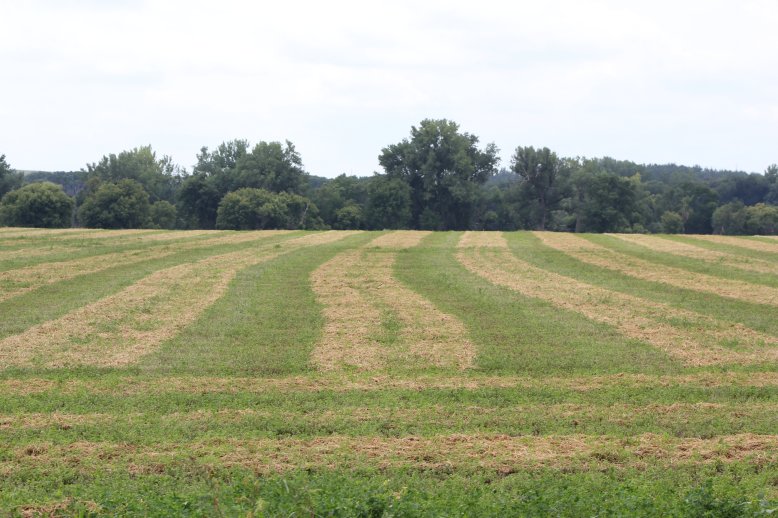
FEEDING MOLDY HAY and TESTING AND FEEDING TOBACCO-BROWN HAY AND SILAGE
By Bruce Anderson, UNL Forage Specialist
FEEDING MOLDY HAY
Moldy hay. No matter how hard you try, eventually you have mold in some of your hay and need to decide about feeding it. Here are some guidelines.
Feeding moldy hay to livestock is a tough decision. Although all hay contains some mold, when mold becomes easily noticeable the decisions become important.
Usually, mold makes hay less palatable, which can result in lower intake or even in animals refusing to eat the hay. Many other problems from mold occur because of mycotoxins produced by certain mold fungi. This also is part of the decision problem since not all molds produce mycotoxins and the amount produced by those that do is unpredictable.
Direct negative affects of moldy hay are difficult to document. Horses may be the most sensitive to mold among common livestock. For instance, mold spores often contribute to respiratory and digestive problems like colic or heaves in horses. Cattle apparently are less affected by mold, but certain molds can cause mycotic abortions or aspergillosis. People, too, can be affected by mold spores. Mold can cause a condition called farmer’s lung, where the fungus actually grows in lung tissue. So try to avoid breathing in many of these spores.
The best course of action often is to minimize feeding moldy hay to more sensitive animals, like horses or pregnant cows. This may require a keen eye or sensitive nose when selecting hay to feed each day. Mixing moldy hay with other feedstuffs can dilute problems sometimes, but be careful that you don’t make your animals sick by tricking them into eating bad hay that they normally would refuse.
Mold is a difficult problem to deal with. Common sense and good observation often are your best decision aids.
TESTING AND FEEDING TOBACCO-BROWN HAY AND SILAGE
Last summer’s weather caused much hay to be baled too wet or silage chopped too dry. Now that hay and silage has heated and turned brown. How did this affect its feeding value?
Hay baled too wet or silage chopped to dry can get excessively hot and cause certain chemical reactions to occur. These chemical reactions and the heat that produces them will darken your forage and often make it smell sweet like caramel.
Livestock often find such hay or silage very palatable. But, the reactions that caused this heat-damage consumes valuable energy and also makes some of the protein become indigestible. Unfortunately, tests for crude protein cannot distinguish between regular crude protein and this heat-damaged protein. As a result, your forage test can mislead you into thinking you have more usable protein in your forage than actually is there.
If your forage test is done using NIR, heat-damaged protein may be one of the analyses reported. And if the heat-damaged protein is high enough, the test also will report an adjusted crude protein that is lower than the regular crude protein. However, the NIR test for heat-damage may not be accurate enough for you if your ration contains a lot of this forage and has little or no extra protein in it for your cattle.
When you suspect you have heat-damaged protein, request from your lab a chemical analysis for heat-damaged protein. Then have then use this test to correctly adjust the amount of crude protein your forage actually will provide to your animals.
Forage tests can tell us a lot about the nutrient supplying ability of our forages. But we need to make sure we conduct the right tests and then use the results wisely.